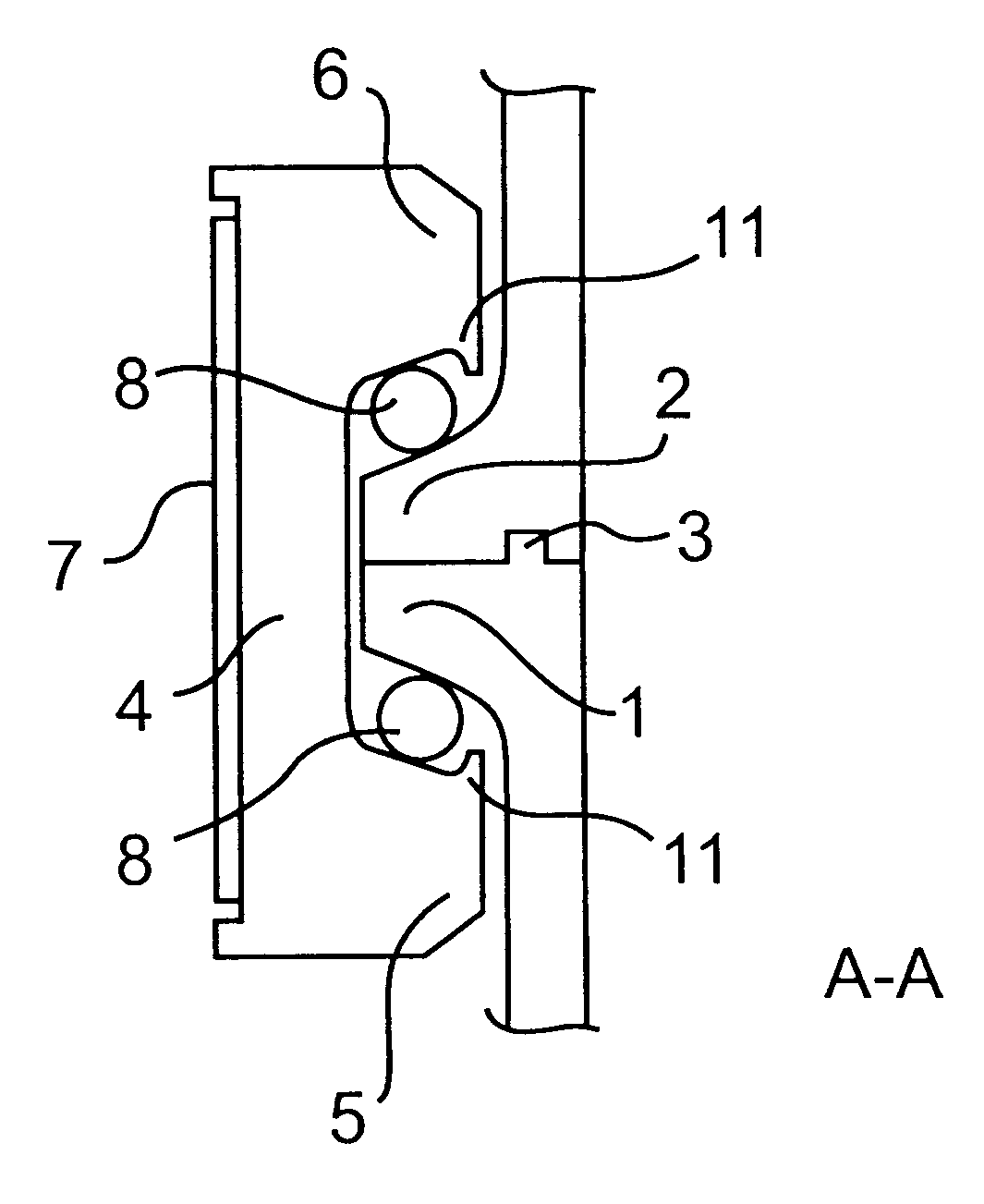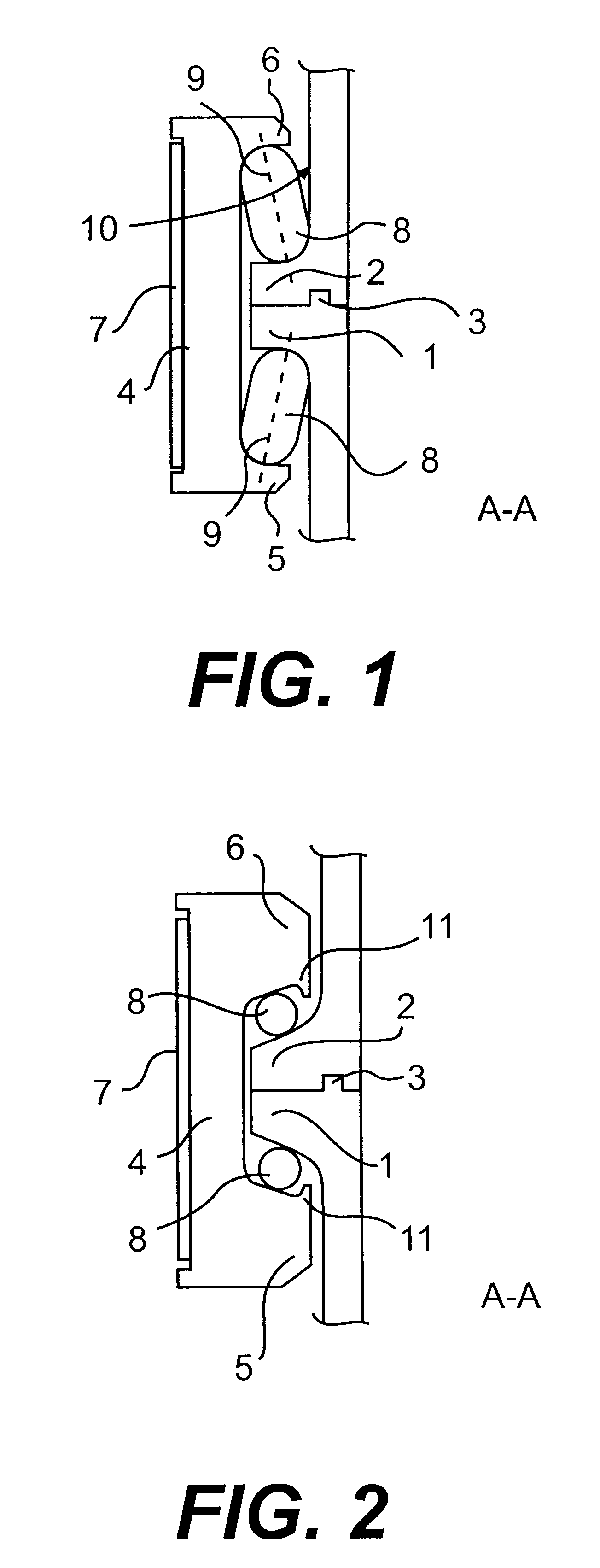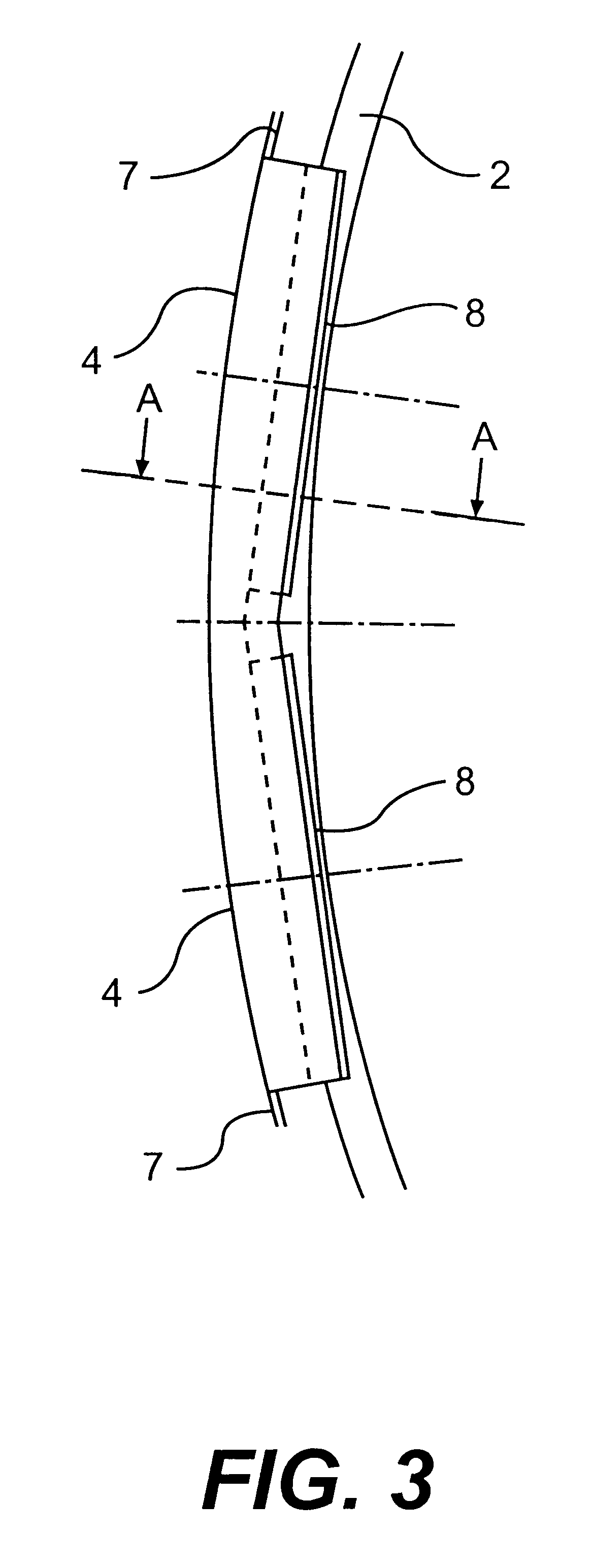Joint for space vehicle
a space vehicle and joint technology, applied in the direction of sheet joining, rod connection, cosmonautic components, etc., can solve the problems of satellite and launch vehicle flanges not being able to separate, design with very high reliability, and prone to self-locking
- Summary
- Abstract
- Description
- Claims
- Application Information
AI Technical Summary
Benefits of technology
Problems solved by technology
Method used
Image
Examples
embodiments
A number of embodiments of the invention are now described, supported by and with reference to the figures.
A cross-section of a clamp connection according to the invention is shown in FIG. 1. The parts of the vehicle are here represented by a launch vehicle and a satellite, where an adapter at the top of the launch vehicle has a flange indicated by 1. The satellite is in an equivalent way equipped with a flange 2 at the bottom. The task of the joint is to hold satellite flange 2 and adapter flange 1 together against a plane of division during manoeuvres in a rocket trajectory. In order to control the relationship of the flanges to each other and to absorb shear loading of the joints, the flanges are equipped with a guide 3. Shear loads can also be absorbed by the use of so-called shear pegs, as is currently done in the most common joints. The flanges 1, 2 are according to this example circular, as is shown in FIG. 3, which shows part of the circular flange 2. The flanges 1, 2 encirc...
PUM
 Login to View More
Login to View More Abstract
Description
Claims
Application Information
 Login to View More
Login to View More - R&D
- Intellectual Property
- Life Sciences
- Materials
- Tech Scout
- Unparalleled Data Quality
- Higher Quality Content
- 60% Fewer Hallucinations
Browse by: Latest US Patents, China's latest patents, Technical Efficacy Thesaurus, Application Domain, Technology Topic, Popular Technical Reports.
© 2025 PatSnap. All rights reserved.Legal|Privacy policy|Modern Slavery Act Transparency Statement|Sitemap|About US| Contact US: help@patsnap.com



